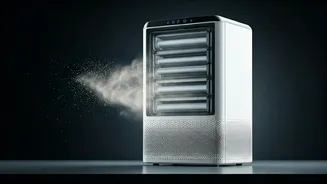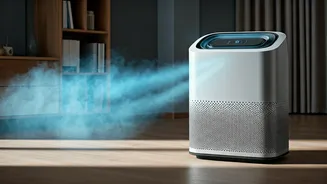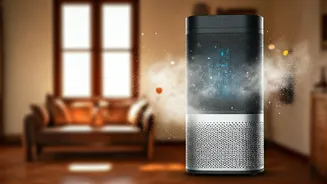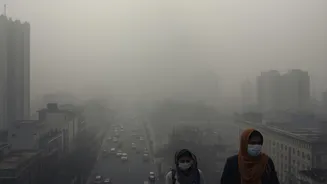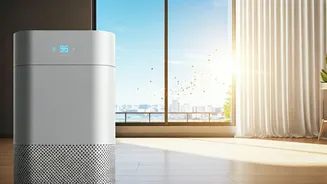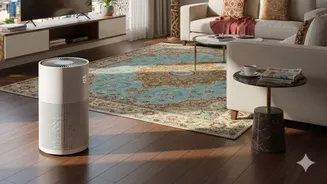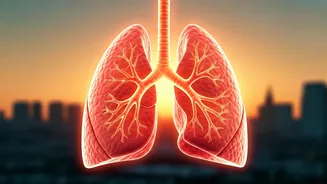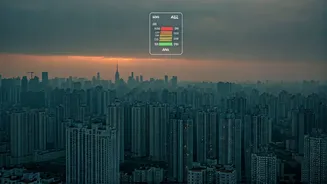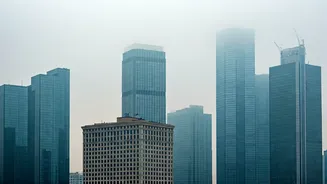Diwali's Aftermath
The aftermath of Diwali celebrations frequently brings a spike in air pollution levels throughout Delhi. This surge is mainly attributable to the widespread
use of fireworks during the festival, which releases a significant amount of pollutants into the atmosphere. These pollutants include particulate matter (PM2.5 and PM10), harmful gases, and other chemical compounds that severely degrade air quality. The impact is often immediate, with visible smog and hazardous air quality index (AQI) readings, particularly in the days following the festivities. Residents, especially those with respiratory issues, children, and the elderly, may experience adverse health effects. Therefore, being prepared for this seasonal phenomenon involves understanding the sources of pollution and adopting preventive measures to minimize exposure to harmful air.
Purifier Selection Basics
When choosing an air purifier, consider several factors for optimal effectiveness. Firstly, evaluate the Clean Air Delivery Rate (CADR), which indicates the volume of clean air the purifier delivers per minute. Match the CADR to the size of your room; a higher CADR is needed for larger spaces. Look for HEPA filters, which are highly efficient at capturing PM2.5, PM10, and other airborne particles. Activated carbon filters are also important, as they remove odors and gases. Consider features like pre-filters that capture larger particles, extending the lifespan of the HEPA filter. Ensure the purifier has a good noise level, preferably below 50 decibels, for a comfortable environment. Think about smart features such as automatic mode, air quality sensors, and Wi-Fi connectivity, though these are often extra, not always critical.
Filter Types Explained
The type of filters in an air purifier greatly influences its performance. HEPA (High-Efficiency Particulate Air) filters are essential for capturing fine particles, including dust, pollen, pet dander, and smoke. They are generally effective at removing at least 99.97% of airborne particles that are 0.3 micrometers in diameter. Activated carbon filters work to adsorb odors, gases, and volatile organic compounds (VOCs). These filters contain activated carbon granules that trap pollutants through the process of adsorption, making them effective against household odors, smoke, and chemical fumes. Pre-filters serve as the first line of defense, capturing larger particles like hair and dust, which extends the life of the other filters. Some purifiers also integrate other technologies, such as UV-C light, which can kill bacteria and viruses, further enhancing the air purification process.
Room Size Matters
Matching the air purifier's capacity to the room size is essential for effective purification. The CADR, or Clean Air Delivery Rate, is a key metric indicating the volume of clean air a purifier can deliver per minute. To find the right CADR, calculate the room's area in square feet and then use the recommended CADR value. Usually, air purifiers will specify their coverage area in terms of square footage. For example, a purifier rated for 300 square feet is suitable for a medium-sized bedroom or living space. Consider that factors like ceiling height and the presence of doors/windows also influence the room's effective size. If you want to purify multiple rooms, a portable unit can be moved, or you might need multiple purifiers. Underestimating the room size requirements can lead to inefficient air cleaning, while oversizing isn't necessarily a bad thing, it just might be a waste of money.
Maintenance and Care
Proper maintenance is critical for extending the life and efficiency of your air purifier. Regularly clean the pre-filter, typically every month or as the manufacturer suggests, to remove accumulated dust and debris. Replace the HEPA filter and activated carbon filter according to the manufacturer's recommendations; this usually means every 6 to 12 months, depending on usage and air quality. Many purifiers have filter replacement indicators that signal when it's time to swap out the filters. Dust and clean the exterior of the purifier regularly to prevent dust buildup. Use a soft, damp cloth for cleaning and avoid harsh chemicals. Store replacement filters in a cool, dry place until needed. Adhering to these maintenance steps ensures your air purifier continues to operate at its peak performance, providing clean air consistently.
Beyond Air Purifiers
While air purifiers are helpful, there are supplementary measures to enhance indoor air quality. Maintaining good ventilation by opening windows when outdoor air quality is good can help circulate fresh air. Regular house cleaning, including vacuuming and dusting, reduces dust and allergens. Consider houseplants, such as peace lilies and snake plants, which naturally filter some pollutants. Avoid sources of indoor air pollution, such as smoking, using incense, or burning candles. Use natural cleaning products and air fresheners to minimize VOCs. Regularly check and maintain HVAC systems, ensuring filters are clean. By incorporating these complementary strategies, you can amplify the positive effects of your air purifier and create a healthier indoor environment.
